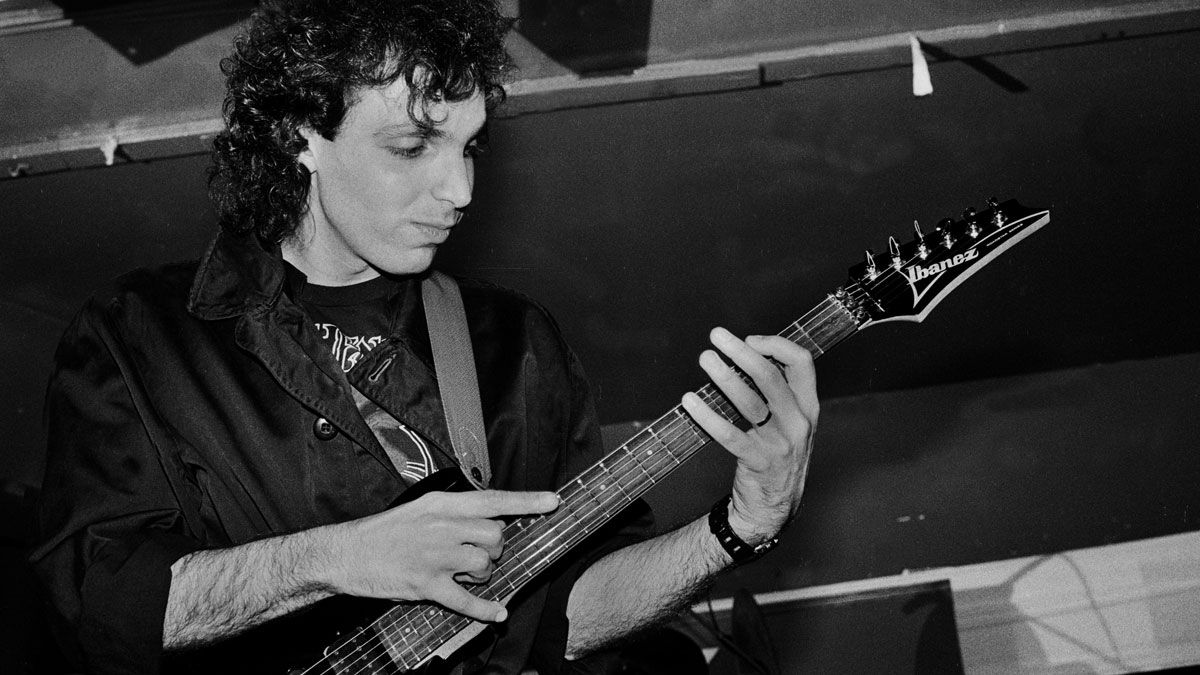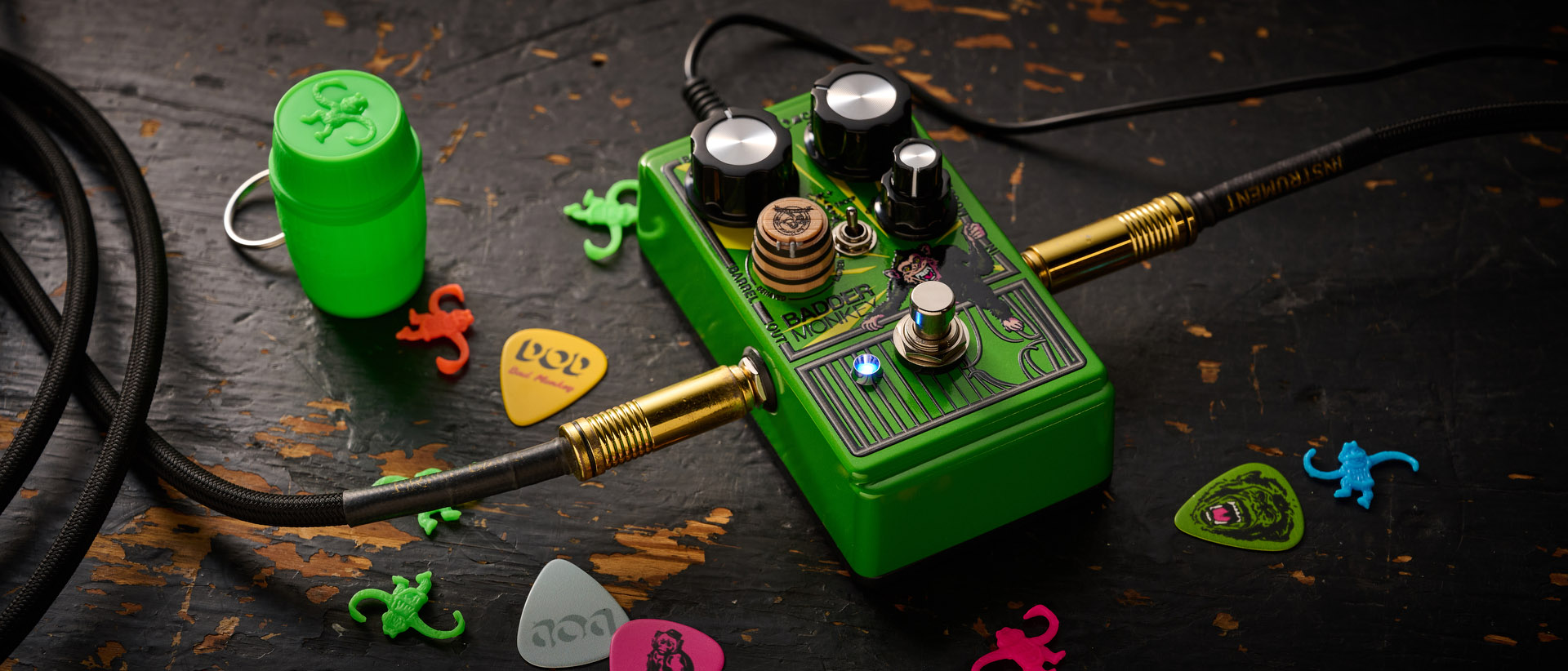Joe Satriani called it the worst record he ever made, but his debut EP featured his most innovative work
In 1984, Satch released his first solo recording: a wild five-track effort that used the electric guitar for everything – even drums

We all know Joe Satriani as the electric guitar innovator who put instrumental shred on the map and taught some of the brightest talents to emerge from the ’80s and ’90s. Yet his earliest solo efforts – recorded long before Surfing with the Alien made him a household name in the guitar world – show another, more esoteric side to the guitar god, and one many fans may not be familiar with.
Released in 1984, the Joe Satriani EP was Satch’s debut solo material. At that time, his band, the Squares, were struggling to land a record deal and splintering over creative differences. Buzz was growing around Satriani himself, however, who was seeking new horizons, and had already started to receive offers from other artists, including Eddie Money.
But that wasn’t enough for the New York guitarist: he had ideas, and he wanted to make music on his own dime – whether that meant he earned any income or not.
“I thought, I’ve got to do it in a way where maybe I’m not using it to make money or to be a career; it has to be a purely artistic venture,” Satriani says in his autobiography, Strange Beautiful Music. “That’s why I got so into playing, and to accomplish this, I was going to need to control it.”
Away from the sterile studio recordings of his band, Satriani sought to recreate the fascination he and eager student Steve Vai had with the simple two-track guitar “fantasies” they created during their lessons.
Joe was inspired to indulge the “odd” nature of these sonic experiments, drawing on the trailblazing experimentalism of Robert Fripp, Brian Eno and Adrian Belew in the process. What resulted was his own, fully independent release – in every possible sense.
“I had all this odd music that I suspected would get spoiled by a band, because the drummer would want to rock, the bass player would want to create his or her own riffs, and the ‘unusualness’ of my music would be compromised by being made accessible,” he mused. “I didn’t want to be accessible.”
All the latest guitar news, interviews, lessons, reviews, deals and more, direct to your inbox!
And he certainly delivered on that premise: recorded with producer Jeff Holt, the Joe Satriani EP not only ditched the band, but used electric guitars for everything. Drastic detuning yielded a makeshift bass. An Allen wrench on the neck pickup would be the guitarist’s kick drum, while scraping strings over the peghead was his hi-hat.
The resultant recordings would prove to be Satriani’s most intimate work and a mind-melting introduction to his melodic and technical prowess – but they’re also endearingly erratic.
Sure, driving opener Talk to Me offers glimpses of future shred opus Surfing With the Alien with its wailing harmonized leads, but Dreaming #11 goes from a spiral staircase of haunting clean passages to a space-age take on funk and R&B, before ending on an uncanny emulation of a steam train (really).
The eerie pick scratches of I Am Become Death are Satch at his darkest, yet the track segues into Saying Goodbye’s heart-wrenching Fripp-esque violin swells. The Joe Satriani EP may have been exploring the limits of the mechanics of electric guitar, but it also pushes the boundaries of human emotion.
It didn’t take much in the way of gear to transport listeners between Satriani’s dystopian nightmares and lush sonic vistas. His main guitar at the time was a Kramer Pacer that “would go out of tune if you just looked at it” – ironically, the need to constantly have an Allen wrench nearby ended up inspiring the guitarist’s pickup-tapping kick drum approach.

But Joe also had a highly desirable vintage guitar in his arsenal for the sessions: a ’54 Fender Stratocaster wound up handling the hammered harmonics on the videogame-esque Banana Mango, utilizing an open D7 tuning with an added 4th.
Those guitars ran through two Marshall half-stacks, a handful of drive pedals and a Maxon rackmount digital delay – a spartan rig for such otherworldly sounds.
When the record was finished, Satriani presented it to his Squares bandmates, who were unimpressed. It wasn’t until Guitar Player magazine hailed the release as “spacey but melodic and soulful” – noting that “Satriani comes highly recommended by guitar wizard Steve Vai” – that Satch realized he could be onto something.
Some of the music’s sweet, and I love that it was avant-garde, but I have no idea why I thought people would want to hear that!
Joe Satriani
“They thought I was some obscure musician, somebody new on the scene. They had no idea I was Joe, formerly of the Squares and now struggling to find another band to play with,” he reflected of the review.
“That’s when I knew I wanted to be that guy they were talking about. I wanted to be that odd, new guitar player. I saw a glimpse of my future, and said to myself, ‘You’ve got to figure out a way to be “that guy”.’”
Given his remarkable output in the decades since, it’s perhaps understandable why Satriani called the EP the worst record of his career in a 2020 interview with Classic Rock: “Some of the music’s sweet, and I love that it was avant-garde, but I have no idea why I thought people would want to hear that!”
Yet for all its namesake’s misgivings, the Joe Satriani EP remains a fascinating document of a guitarist unconstrained by boundaries of technicality or even instrumentation. It not only provided the blueprint for Satriani’s entire career, but also his later sonic explorations on groundbreaking works such as techno-shred opus Engines of Creation.
More than anything, however, it proved what we all now take for granted: that Satriani has always been a master of melody and one of the greatest of all time – even when he’s hitting pickups with Allen keys.

Mike has been Editor-in-Chief of GuitarWorld.com since 2019, and an offset fiend and recovering pedal addict for far longer. He has a master's degree in journalism from Cardiff University, and 15 years' experience writing and editing for guitar publications including MusicRadar, Total Guitar and Guitarist, as well as 20 years of recording and live experience in original and function bands. During his career, he has interviewed the likes of John Frusciante, Chris Cornell, Tom Morello, Matt Bellamy, Kirk Hammett, Jerry Cantrell, Joe Satriani, Tom DeLonge, Radiohead's Ed O'Brien, Polyphia, Tosin Abasi, Yvette Young and many more. His writing also appears in the The Cambridge Companion to the Electric Guitar. In his free time, you'll find him making progressive instrumental rock as Maebe.
![Joe Satriani - Joe Satriani (1984) [Full EP] [HQ Audio] - YouTube](https://img.youtube.com/vi/dxyaLlhHe0g/maxresdefault.jpg)
